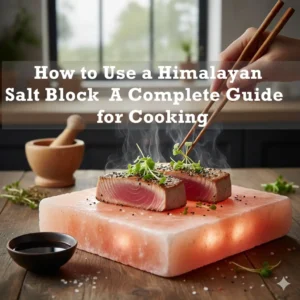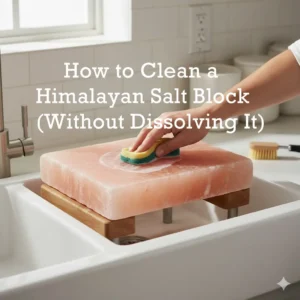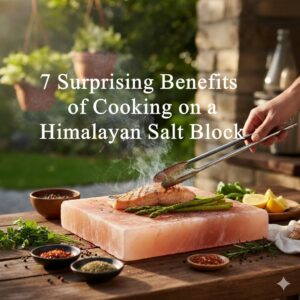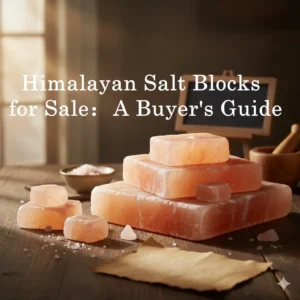Himalayan salt blocks are natural slabs of compressed mineral salt used for grilling, searing, and serving food. Their crystalline composition imparts a delicate seasoning while creating a striking presentation for both kitchen and table use. However, they are not suitable for every heat source—particularly induction cooktops, which require magnetic materials to generate heat. This article explains why induction stoves cannot heat salt blocks and recommends safer, more effective alternatives such as gas burners, ovens, and grills.
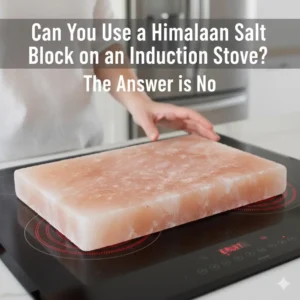
Prerequisites: Essential Tools & Materials
Before heating a Himalayan salt block, ensure you have the right equipment and setup for safe operation. Because the block isn’t compatible with induction cooktops, select a suitable heat source such as a gas burner, conventional electric stove, oven, or outdoor grill.
- A Himalayan salt block of appropriate size and thickness.
- A compatible heat source such as a gas stove, electric coil stove, oven, or grill.
- Heat-resistant gloves or sturdy tongs for handling the heated block.
- A flat, heatproof surface or tray for stable placement.
Preparing these essentials in advance helps protect the block, ensures even heating, and minimizes the risk of burns during cooking or serving.
Step-by-Step Guide to Heating Your Himalayan Salt Block Safely
Properly heating a Himalayan salt block prevents cracking and provides a stable, even cooking surface. Because salt is a natural mineral rather than metal, it conducts heat differently from conventional cookware. Follow these steps to handle your salt block correctly and extend its lifespan.
Step 1: Select a Compatible Heat Source
The first step is to choose an appropriate heat source. Induction stoves are unsuitable because Himalayan salt lacks the ferromagnetic properties required to generate heat through induction.
- Use a gas stove, electric coil stove, oven, or outdoor gas grill.
- Avoid glass-ceramic cooktops, as uneven heating can lead to cracks or surface damage.
Selecting the proper heat source ensures stable temperature distribution and protects both the block and your cooktop.
Step 2: Warm the Salt Block Gradually
Once you’ve chosen a compatible heat source, heat the block slowly to prevent stress fractures. Begin with low heat and increase the temperature gradually over 10–15 minutes so the salt expands evenly.
- Raise the temperature in small increments instead of applying high heat immediately.
- When using an electric coil stove, place a metal tray or diffuser between the coil and the block to distribute heat evenly.
Allowing the block to warm steadily minimizes thermal shock and ensures consistent cooking performance.
Step 3: Cook or Serve with Care
Once evenly heated, the salt block is ready for cooking. Place meats, seafood, or vegetables directly on the surface for a naturally seasoned sear. The block can also be chilled beforehand for serving cold dishes such as sushi, fruit, or desserts.
- Always handle the salt block with heat-resistant gloves or tongs, as it retains heat for an extended period.
- Allow it to cool completely before cleaning.
Careful handling helps preserve the block’s structure and keeps it ready for future use.
Premium Himalayan Salt Blocks for Culinary & Hospitality Needs
Partner with Jilin Ever Creation for authentic pink Himalayan salt blocks that enhance flavor and presentation in professional kitchens, retail spaces, and hospitality venues. Customize sizes, shapes, packaging, and branding, all supported by flexible global shipping and low minimum orders.
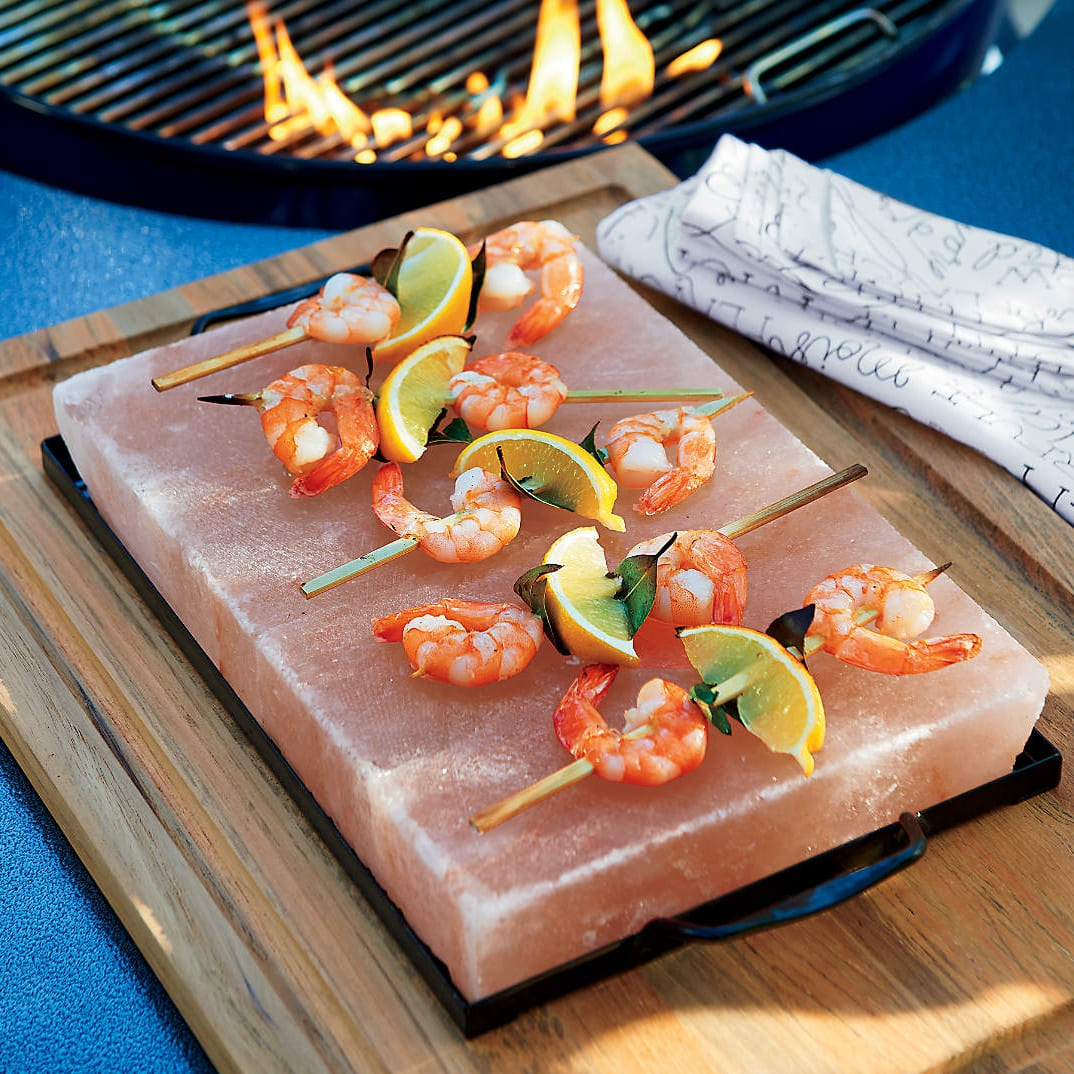
Why Himalayan Salt Blocks Don’t Work on Induction Cooktops
Induction cooktops generate heat through electromagnetic fields that create eddy currents within ferromagnetic materials. This process produces heat directly inside the cookware rather than through an external flame or heating element. For it to function, the cookware must contain iron or compatible stainless steel that reacts to magnetic fields.
Himalayan salt blocks, although ideal for grilling and presentation, lack these ferromagnetic properties. Because salt is both non-conductive and non-magnetic, the cooktop cannot detect the block. Consequently, no heat is generated, and the stove remains inactive, leaving food uncooked.
Placing a salt block on an induction surface may trigger an error signal or cause the unit not to start. Attempting to use adapters or other workarounds can also create uneven thermal stress, increasing the risk of cracks or permanent damage. For safe and consistent results, heat a Himalayan salt block using a gas stove, oven, or grill instead.
Thermal Risks: Prevent Cracks and Structural Damage
Himalayan salt blocks are both decorative and functional, yet their crystalline structure makes them highly sensitive to thermal shock. Because the salt is dense and brittle, abrupt or uneven changes in temperature can cause it to crack or split. Effective heat control is therefore critical when using a salt block for cooking or serving.
Rapid heating—such as placing the block directly on a high flame or induction cooktop—creates internal stress as different layers expand at varying rates. These stress points can develop into visible fissures or complete fractures, reducing the block’s durability and safety.
To avoid damage, always warm the salt block gradually. Begin with low heat, increase it in small stages, and never transfer a cold block directly into a hot oven or onto a grill. Slow, even heating maintains structural stability and extends the block’s usable life under regular cooking conditions.
Best Heating Methods for Himalayan Salt Blocks
Himalayan salt blocks perform exceptionally well in cooking when heated correctly. They can withstand high temperatures, but gradual heating is essential to prevent cracking. Choose a method that provides consistent, even heat while minimizing thermal stress on the salt.
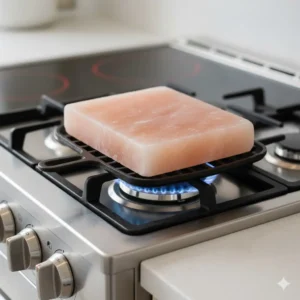
A gas stove or electric coil cooktop works efficiently with a heat diffuser. Begin on low heat and increase gradually so the block adjusts evenly. Conventional ovens are also effective, supplying stable and uniform heat that reduces surface strain.
For outdoor cooking, a gas or charcoal grill offers sufficient heat to sear meats and vegetables. Preheat the block slowly before exposing it to direct flames to preserve its structure and extend usability.
Avoid using Himalayan salt blocks on induction or glass-ceramic cooktops. Because salt lacks magnetic conductivity, induction burners cannot generate heat. Selecting a compatible method ensures safe handling and optimal cooking performance.
Frequently Asked Questions About Himalayan Salt Block Usage
What happens if I put a salt block on an induction stove?
An induction stove will not recognize a Himalayan salt block because salt lacks magnetic or conductive properties. Induction cooktops rely on electromagnetic fields to generate heat within compatible cookware, but no current forms inside the salt. The block remains cold, and the cooktop stays inactive.
Can I use an adapter plate with an induction cooktop?
Some ferromagnetic induction adapter plates can transfer heat from the cooktop to a salt block. However, this indirect method often causes uneven heating and increases the risk of cracking. A controlled heat source—such as a gas stove or oven—is a safer, more reliable choice.
What is the safest way to heat a salt block indoors?
The safest approach is to heat the salt block gradually in a conventional oven or on a gas stove set to low heat. This slow temperature rise prevents thermal shock and extends the block’s lifespan. Always dry the block completely before heating to avoid cracking caused by moisture.
Are gas or electric coil stovetops suitable for salt blocks?
Yes—with proper precautions. Gas ranges are effective because the flame allows precise temperature control. Electric coil stoves also work if you place a metal ring or heat diffuser between the coil and the block to distribute heat evenly and reduce stress fractures.
Why is oven heating recommended for even heat distribution?
Ovens provide consistent heat from all sides, minimizing internal stress within the salt block. This balanced heating prevents rapid expansion and cracking, making it the most controlled method for preparing a block before searing or serving food.
Final Thoughts
Induction stoves cannot heat Himalayan salt blocks because the blocks lack magnetic and conductive properties. Without interaction with the electromagnetic field, no heat is generated, making the two fundamentally incompatible.
For safe and effective use, heat a salt block gradually over a gas burner, electric coil, oven, or grill. Avoid rapid temperature changes, which can cause cracking. Gradual heating preserves the block’s integrity and ensures even cooking results.
With proper care and the right heating method, a Himalayan salt block will last longer and enhance culinary presentation. For consistent quality and reliable supply, partner with Jilin Ever Creation for authentic pink Himalayan salt blocks designed for both cooking and serving.


